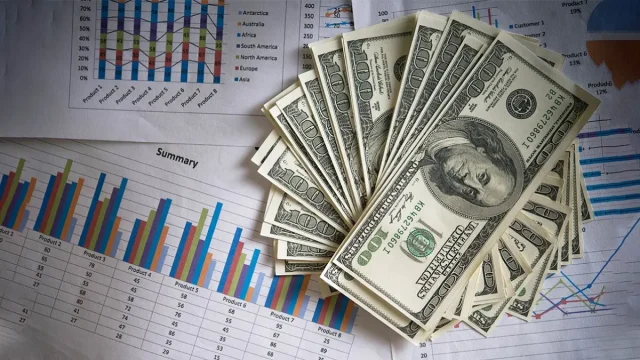On Tuesday, the US dollar remained close to a 15-month low compared to other major currencies, as investors were eagerly anticipating new developments to assess potential downsides following last week’s unexpectedly lower US inflation. The US dollar index, which gauges the greenback against a basket of six currencies, dropped to as low as 99.587, staying near Friday’s low of 99.574, the lowest since April 2022.
Last week, the index experienced its worst performance in 2023 due to a decline in US inflation, easing the pressure on the Federal Reserve to continue raising interest rates. Money markets have already priced in a 25-basis-point rate hike from the Fed at its upcoming policy meeting this month, but there are expectations that rates might come down as early as December.
Francesco Pesole, FX strategist at ING, expressed uncertainty about the dollar’s movement in the short term, noting the bearish momentum but also observing that it appeared somewhat overextended, particularly considering recent multi-month highs in the euro and sterling.
The euro hit a fresh 17-month high of $1.1276 against the dollar in early European trade, with markets largely factoring in a 25 bps hike from the European Central Bank when it announces its policy on July 27. However, the outlook for a further rate increase in September remains uncertain as euro zone economic activity slowed in June.
Sterling gained 0.3 per cent to $1.3115, remaining close to last week’s peak of $1.3144, the highest since April 2022. Meanwhile, the Japanese yen rose approximately 0.4 per cent to 138.215 per dollar, with investors keeping an eye on the Bank of Japan’s (BOJ) monetary policy meeting next week for potential changes to its ultra-dovish policy stance.
Market participants have increasingly priced in the possibility of the BOJ widening its yield curve control policy’s trading band by 25 bps in the next meeting, as stated by economist Ryota Abe from SMBC.
The Australian dollar remained flat at $0.6818 after the Reserve Bank of Australia’s (RBA) July policy meeting minutes were released, providing no major surprises on the rate outlook. Tapas Strickland, head of market economics at National Australia Bank, noted that the minutes lacked significant new information from Governor Lowe’s recent speech, where he seemed less definitive on the need for further rate hikes and more cautious about potential growth risks.
On the other hand, the New Zealand dollar declined by 0.5 per cent to $0.6297, with both the Australian and New Zealand dollars suffering losses due to data from China. China’s economy grew at a slower pace in the second quarter due to weakened demand domestically and internationally.
China’s top economic planner pledged to roll out policies promptly to “restore and expand” consumption as consumers’ purchasing power remained weak. The offshore yuan remained steady at 7.1771 per dollar after the People’s Bank of China set a daily mid-point stronger than anticipated.





















